In the world of project management and issue tracking, Atlassian’s Jira suite has emerged as a powerful and versatile tool, offering solutions for a wide range of organizational needs. Jira Core and Jira Software are two key offerings within this suite, each tailored to meet specific requirements and demands. Understanding the nuances that set Jira Core and Jira Software apart is essential for businesses and teams seeking the right fit for their projects.
This article aims to explore the fundamental differences between Jira Core and Jira Software, shedding light on their unique features, use cases, and benefits. At first glance, it may appear that both platforms serve similar purposes, but a closer examination reveals that they cater to distinct audiences.
Jira Core is designed primarily for business and administrative teams, focusing on task management, process automation, and business project tracking.
In contrast, Jira Software is tailored to software development teams, offering a comprehensive set of tools for agile project management, sprint planning, and issue tracking.
What Is Jira Software?
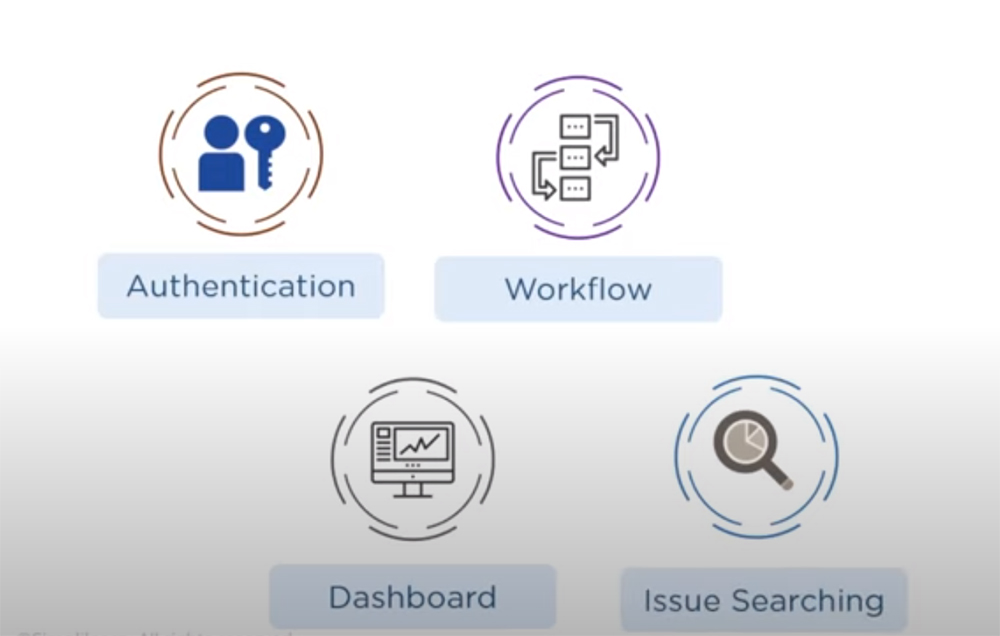
Key Features
- Agile Project Management: Jira Software provides powerful support for agile methodologies such as Scrum and Kanban. This feature is indispensable for software development teams that need to work iteratively, respond to changing requirements, and continuously improve their processes. It enables teams to plan, track, and manage their work using boards, backlogs, and sprints;
- Issue Tracking: The heart of Jira Software lies in its ability to manage and track issues efficiently. In the context of software development, these issues can range from bug reports and feature requests to user stories and technical tasks. The platform allows you to create, assign, prioritize, and track issues throughout their lifecycle;
- Custom Workflows: Jira Software provides the flexibility to define and customize workflows that reflect your team’s unique processes. This is invaluable for ensuring that the tool adapts to your specific project requirements and not the other way around;
- Integration and Extensibility: Jira Software seamlessly integrates with various development and collaboration tools. It connects to version control systems like Git, enabling developers to link code changes to Jira issues. The Atlassian Marketplace offers a wide array of plugins and add-ons that can be integrated to extend functionality further;
- Reporting and Dashboards: The platform offers detailed reporting and customizable dashboards that provide insights into your project’s progress. You can track metrics, view burn-down charts, and visualize your team’s performance to make informed decisions;
- Scalability: Jira Software is designed to handle projects of all sizes, from small startups to large enterprises. Its scalability ensures that it can grow with your team’s needs;
Ideal Use Cases for Jira Software
Jira Software is ideally suited for software development teams, both large and small, who are working on projects using agile methodologies.
Here are some common use cases:
- Agile Development Projects: Whether your team follows Scrum, Kanban, or a customized agile process, Jira Software can be tailored to support your methodology;
- Bug Tracking: If your primary need is to efficiently manage and track software defects and issues, Jira Software’s robust issue-tracking capabilities are invaluable;
- Feature and User Story Management: For teams focused on adding new features and improving user experiences, Jira Software’s user story management and customizable workflows are beneficial;
- Project and Sprint Planning: Jira Software helps teams plan and execute projects using sprints, backlogs, and boards. It’s excellent for managing tasks, assigning work, and tracking progress;
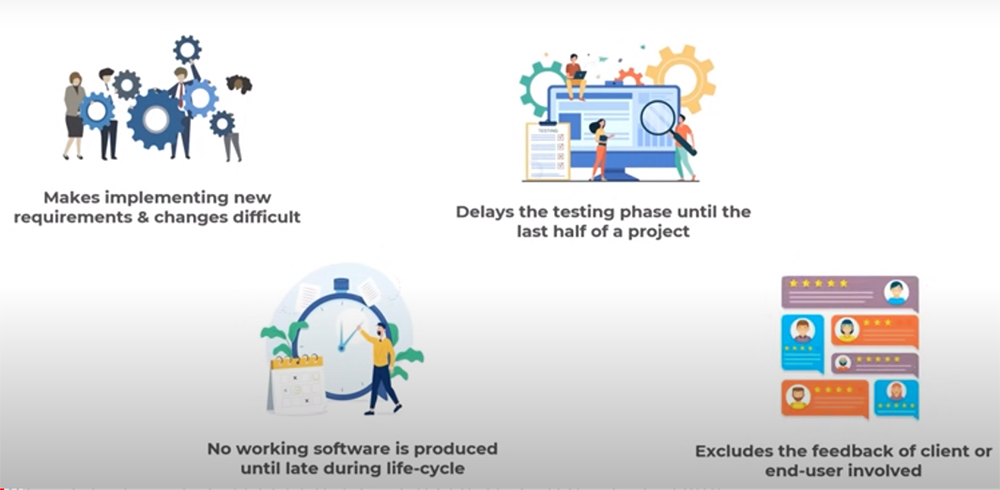
- Integration with Development Tools: Teams that rely on various development tools and version control systems will appreciate Jira Software’s seamless integration capabilities;
What Is Jira Core?
Jira Core, like Jira Software, is an integral part of the Atlassian Jira suite. However, it is distinct in its target audience and primary use cases [2].
Key Features:
- Customizable Workflows: Jira Core allows users to define and customize workflows tailored to specific business processes. Whether it’s managing HR tasks, legal approvals, marketing campaigns, or any other non-technical project, the platform can be configured to match your workflow precisely;
- Task and Issue Tracking: Similar to Jira Software, Jira Core provides issue-tracking capabilities, but it is optimized for a wider range of use cases. You can create issues for tasks, projects, or processes that don’t necessarily follow an agile development methodology;
- Automation Rules: Automation is a significant aspect of Jira Core. It allows you to create rules that automate repetitive tasks and processes, saving time and reducing the risk of human error;
- Real-time Collaboration: Jira Core supports real-time collaboration by allowing team members to comment on issues, share documents, and communicate within the platform;
- Permission Controls: The platform offers fine-grained control over permissions and access, ensuring that sensitive business information is appropriately secured;
- Custom Fields and Forms: Jira Core enables users to create custom fields and forms to capture specific information related to business projects and processes;
Ideal Use Cases for Jira Core
Jira Core is a versatile tool that can be employed across various business functions and industries. It is an ideal choice for:
- Project Management: Businesses can use Jira Core to manage projects, track tasks, and collaborate on projects across different departments, such as marketing, HR, legal, and operations;
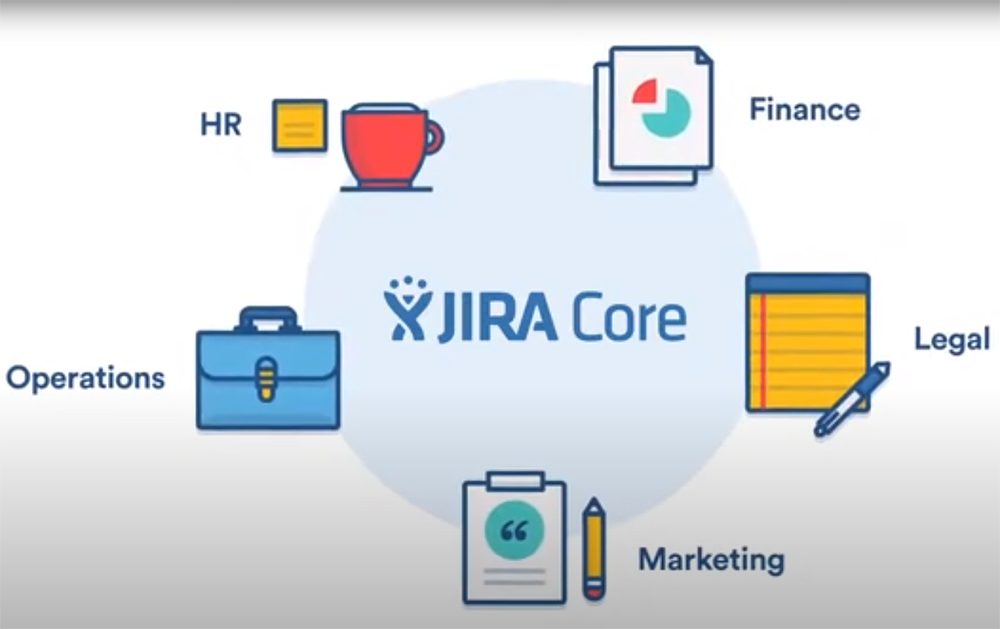
- Task Management: Teams that need to manage and track individual and team tasks can customize Jira Core’s workflows to fit their processes;
- Process Automation: Jira Core’s automation rules are highly valuable for automating repetitive tasks, reducing manual effort, and improving process efficiency;
- Compliance and Governance: Businesses in regulated industries can leverage Jira Core’s customizable workflows and permission controls to ensure compliance and governance requirements are met;
- Team Collaboration: Jira Core supports team collaboration by providing a centralized platform for discussions, document sharing, and task management;
Jira Core vs. Jira Software: Key Differences and Considerations
While Jira Software and Jira Core share common features, they cater to distinct audiences and primary use cases. It’s crucial to understand these differences to make the right choice for your organization.
Here are some key distinctions and considerations:
-
Target Audience:
- Jira Software: Designed for software development teams following agile methodologies;
- Jira Core: Targeted at business professionals, project managers, and teams across various departments and industries [3];
-
Agile vs. Business Projects:
- Jira Software is optimized for agile development projects, focusing on sprints, backlogs, and user stories;
- Jira Core offers flexibility for managing business projects and processes, with customizable workflows and automation;
-
Issue Tracking:
Both platforms support issue tracking, but Jira Software’s issue tracking is highly specialized for software development. Jira Core provides broader issue-tracking capabilities that encompass various types of tasks and projects.
-
Customization:
- Jira Software allows for customization within the context of agile methodologies;
- Jira Core offers more extensive customization options, making it suitable for a wider range of business processes;
-
Integration and Extensibility:
- Jira Software offers seamless integration with development and version control tools;
- Jira Core is less specialized for development tools but provides integration with various business applications;
-
Reporting and Dashboards:
Both platforms offer reporting and dashboards, but Jira Software’s focus is on metrics relevant to software development, while Jira Core is adaptable to different business scenarios.
-
Pricing:
Jira Software Or Jira Core – What To Choose:
How Do Your Teams Currently Work?
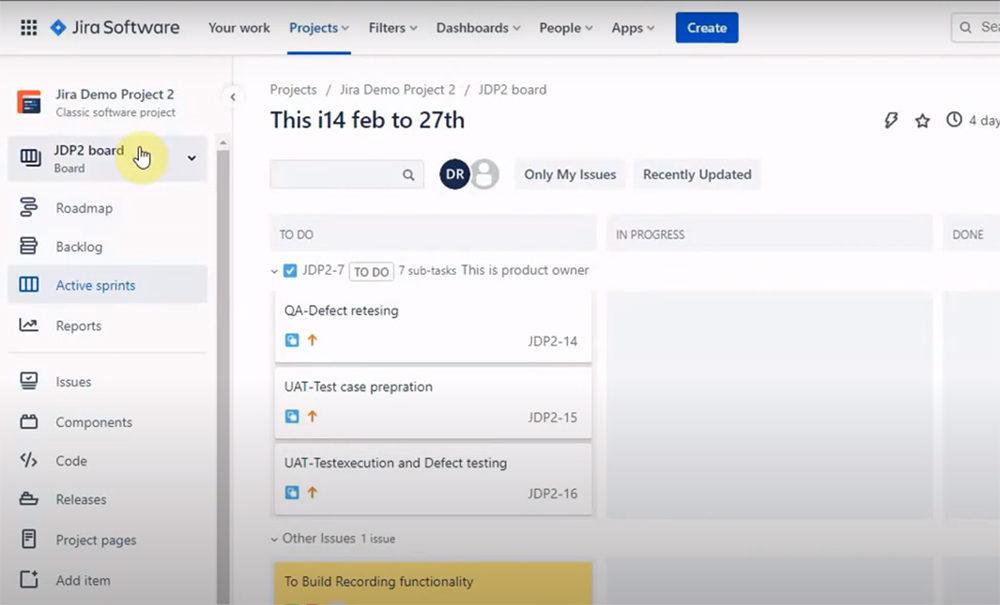
Jira Software: If your teams are primarily engaged in software development or are following agile methodologies like Scrum or Kanban, Jira Software is likely the better choice. It’s tailored to support agile workflows, making it a seamless fit for teams working on coding, testing, and delivering software.
Jira Core: If your teams encompass a broader spectrum of departments and business functions, such as marketing, HR, operations, or legal, and they require a tool that can adapt to a variety of business processes, Jira Core is the more versatile option. Its customizable workflows and process automation capabilities make it suitable for non-technical tasks and projects.
What Size Are Your Teams? How Fast Will You Grow?
Jira Software: Jira Software is scalable, making it suitable for both small teams and large enterprises. It is particularly valuable for growing software development teams as it supports agile practices and offers collaboration features for distributed teams.
Jira Core: Jira Core also accommodates teams of various sizes, but its primary strength lies in its adaptability for small to mid-sized teams across different business functions. It’s well-suited for organizations that need to grow gradually or are primarily focused on improving business operations [4].
How Much Customization Do You Want To Do?
Jira Software: If you are looking for a tool with a strong focus on agile project management and you’re comfortable working within agile methodologies, Jira Software provides a structured environment with customization options that align with agile practices. However, extensive customization beyond agile practices may be limited.
Jira Core: Jira Core offers a higher degree of customization and flexibility when it comes to workflows and automation. If your organization’s processes vary significantly from one project to the next or if you need to automate complex business tasks, Jira Core can be tailored to meet your specific needs.
Which Features Do You Require?
Consider your organization’s specific needs and the features that are essential for your project management and issue tracking.
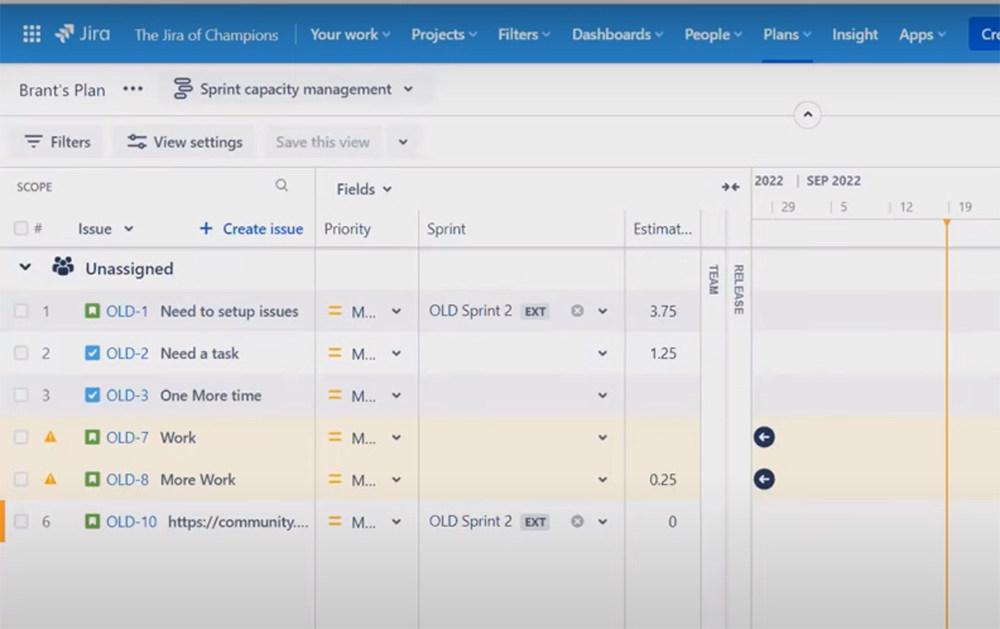
Here’s a breakdown of some crucial features and how they relate to your choice between Jira Software and Jira Core:
Agile Project Management:
- Jira Software: Agile teams requiring sprint planning, backlog management, and user story tracking should opt for Jira Software;
- Jira Core: Non-agile teams will find Jira Core’s customization and automation capabilities more suitable for their needs;
Issue Tracking:
- Jira Software: Perfect for software issue tracking;
- Jira Core: Adaptable for tracking various types of tasks, not just software-related issues;
Custom Workflows:
- Jira Software: Supports agile workflows, which may not be ideal for non-technical teams;
- Jira Core: Offers extensive customization for workflows, making it more versatile for business processes;
Integration and Extensibility:
- Jira Software: Integrates seamlessly with development tools;
- Jira Core: Provides flexibility for integrating with various business applications;
Reporting and Dashboards:
- Jira Software: Emphasizes agile metrics and reporting;
- Jira Core: Offers adaptability for creating reports relevant to diverse business scenarios;
Scalability:
Both Jira Software and Jira Core are scalable, but the choice depends on your team size and needs.
Tips For Jira Beginners:
Getting Started With Jira:
- Understand Jira’s Core Concepts: Before diving into Jira, take some time to familiarize yourself with key concepts like issues, projects, workflows, and boards. This foundational knowledge will make your Jira journey smoother;
- Start with a Tutorial or Training: Atlassian offers official tutorials and training resources for Jira. These guided lessons will provide you with a structured introduction to the platform’s features and functionalities;
- Set Up a Test Environment: If possible, create a test project to experiment with Jira’s features without impacting live projects. This will allow you to practice and learn without the risk of making mistakes in a real work environment;
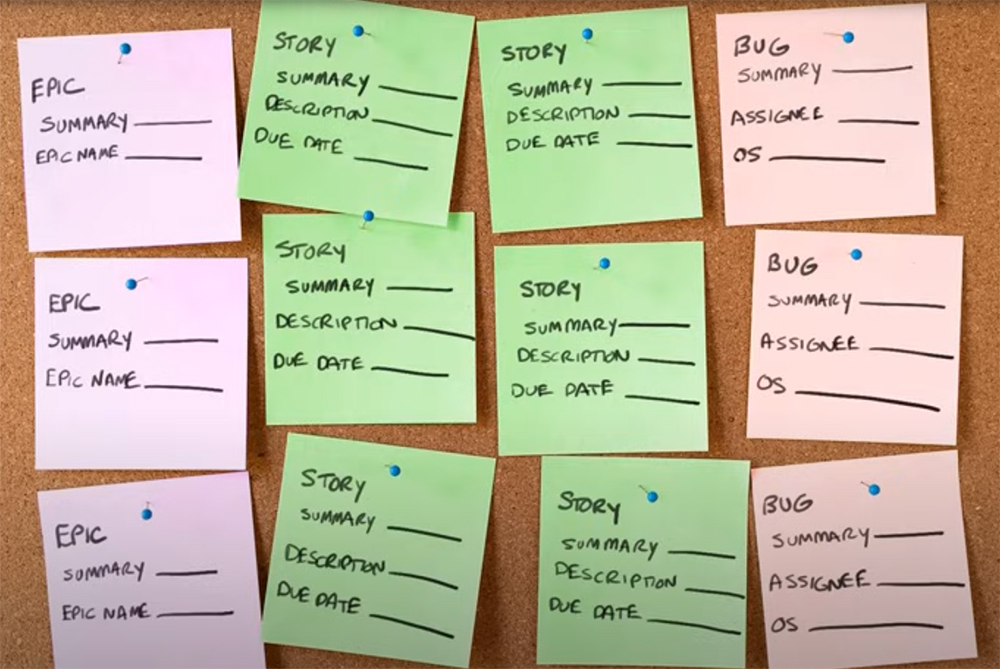
- Learn Jira’s Navigation: Understand the layout and navigation of Jira. Familiarize yourself with the main menus, dashboards, project views, and how to navigate between projects and boards;
- Master Basic Issue Management: Learn how to create, edit, assign, and transition issues. Issues are at the core of Jira, so being proficient in managing them is crucial;
Customize Your Jira System:
- Configure Your Workflows: Customize workflows to match your team’s processes. Whether you’re following agile methodologies or have unique workflows, Jira’s flexibility allows you to adapt it to your needs;
- Create Custom Fields: Jira allows you to define custom fields, which can be tailored to capture specific data relevant to your projects. This can help you track information critical to your organization;
- Set Up Automation Rules: Jira provides automation capabilities to streamline repetitive tasks. Create automation rules to save time and reduce manual effort;
- Design Custom Screens and Issue Types: Tailor your project’s issue types and screens to align with your project’s needs. This is particularly useful if you’re managing various types of tasks or projects within Jira [5];
- Configure Permissions and Access: Control who can view, edit, and manage various aspects of your projects. Ensure that permissions are set up correctly to protect sensitive data and maintain security;
Utilize Jira Apps and Plugins:
- Set Up Dashboards: Create dashboards with widgets that provide insights into your project’s progress, such as burndown charts, pie charts, and filters. This helps you monitor key metrics at a glance;
- Stay Organized with Components and Versions: Use components and versions to categorize and manage different parts of your project. This can make tracking and reporting more efficient;
- Explore Jira’s Reporting Capabilities: Dive into Jira’s reporting features to gain insights into your project’s performance. Understand how to generate reports and share them with your team;
- Continuously Learn and Seek Help: Jira is a powerful tool with a lot of depth. Keep learning, seek guidance from Jira communities, and don’t hesitate to ask questions or consult documentation when you encounter challenges;
Why Buy Jira?
Investing in Jira, Atlassian’s project management and issue-tracking tool is a strategic decision for many organizations. Jira offers a range of compelling benefits that make it a worthwhile investment.
Here are several reasons why buying Jira can be a smart choice:
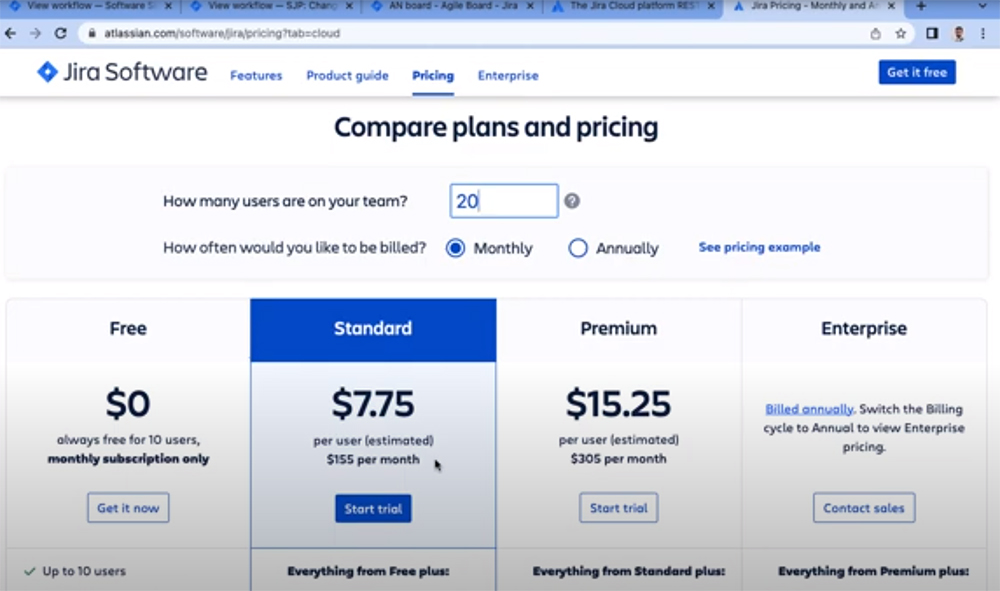
Tailored to Software Development: Jira Software, in particular, is designed for software development teams. It offers tools for agile project management, code integration, and issue tracking, making it an ideal choice for development projects.
Customization: Jira allows you to tailor the system to your specific needs. You can create custom workflows, issue types, fields, and screens to match your organization’s unique processes, ensuring that Jira adapts to your requirements and not the other way around.
Integration and Extensibility: Jira seamlessly integrates with various development, collaboration, and business tools. This means you can connect it to version control systems, continuous integration, and other software that your team uses. Additionally, the Atlassian Marketplace offers a wide array of plugins and add-ons for further customization and extensibility.
Automation: Automation is a critical feature of Jira. It allows you to create rules that automate repetitive tasks, reducing manual effort and the risk of errors. This automation feature is especially valuable for improving productivity and efficiency.
Reporting and Analytics: Jira offers detailed reporting and customizable dashboards, which provide insights into your project’s progress. You can track metrics, view burndown charts, and visualize your team’s performance to make informed decisions [6].
Collaboration: Jira provides a centralized platform for team collaboration. Team members can comment on issues, share documents, and communicate within the platform, making it easier to collaborate and keep everyone on the same page.
Scalability: Jira is versatile and can scale with your organization’s growth. Whether you’re a small startup or a large enterprise, Jira can adapt to your changing needs.
Security and Permissions: Jira allows you to set up fine-grained controls for permissions and access, ensuring that sensitive business information is appropriately secured and only accessible to authorized personnel.
Community and Support: Atlassian has a large and active user community. This means you can access a wealth of knowledge and expertise when seeking help or guidance. Additionally, Atlassian offers various support plans for users who require direct assistance.
Versatility Across Industries: While Jira Software is tailored to software development, other Jira offerings like Jira Core and Jira Service Management cater to a broader range of industries and business functions. This versatility makes Jira a valuable tool across various sectors.
Proven Track Record: Jira has been widely adopted by organizations around the world. Its reliability and success stories from a diverse set of industries demonstrate its effectiveness in managing projects and issues.
Jira Advantages
Jira, developed by Atlassian, offers a wide range of advantages, making it a popular and versatile project management and issue-tracking tool.
Here are some of the key advantages of using Jira:
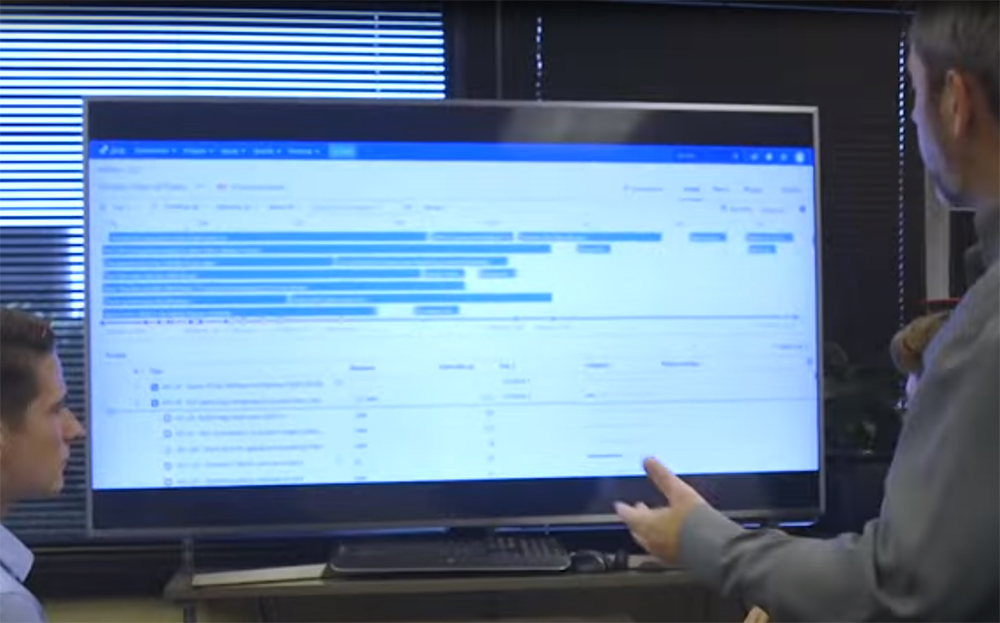
Efficient Issue Tracking: Jira excels in issue tracking, allowing teams to create, assign, prioritize, and manage issues with ease. It provides a structured and organized way to handle tasks and problems, enhancing productivity and accountability.
Agile Project Management: Jira Software, in particular, supports agile methodologies such as Scrum and Kanban. It provides tools for sprint planning, backlog management, and user story tracking, making it an ideal choice for software development teams.
Customization: Jira is highly customizable. You can create custom workflows, issue types, fields, and screens to match your organization’s unique processes. This adaptability ensures that Jira aligns with your specific needs and workflows.
Integration and Extensibility: Jira seamlessly integrates with various development, collaboration, and business tools. It connects to version control systems like Git and offers integration with other software via the Atlassian Marketplace, which provides numerous plugins and add-ons.
Automation: Jira’s automation capabilities allow you to create rules that automate repetitive tasks, saving time and reducing manual effort. This feature is valuable for improving efficiency and reducing the risk of errors.
Collaboration: Jira provides a centralized platform for team collaboration. Team members can comment on issues, share documents, and communicate within the platform, enhancing collaboration and communication.
Security and Permissions: Jira allows you to set up fine-grained controls for permissions and access, ensuring that sensitive business information is appropriately secured and only accessible to authorized personnel.
Scalability: Jira is versatile and can scale with your organization’s growth. It’s suitable for both small startups and large enterprises, making it a robust and adaptable solution.
Community and Support: Jira benefits from a large and active user community. This means you can access a wealth of knowledge and expertise when seeking help or guidance. Additionally, Atlassian offers various support plans for users who require direct assistance.
Versatility Across Industries: While Jira Software is tailored to software development, other Jira offerings like Jira Core and Jira Service Management cater to a broader range of industries and business functions. This versatility makes Jira a valuable tool across various sectors.
Proven Track Record: Jira has been widely adopted by organizations globally. Its reliability and numerous success stories across diverse industries demonstrate its effectiveness in managing projects and issues.
Which Jira Should You Get:
Jira Core:
Best For: Business professionals, teams across various departments, and organizations focused on managing business projects, tasks, and processes that do not revolve around software development.
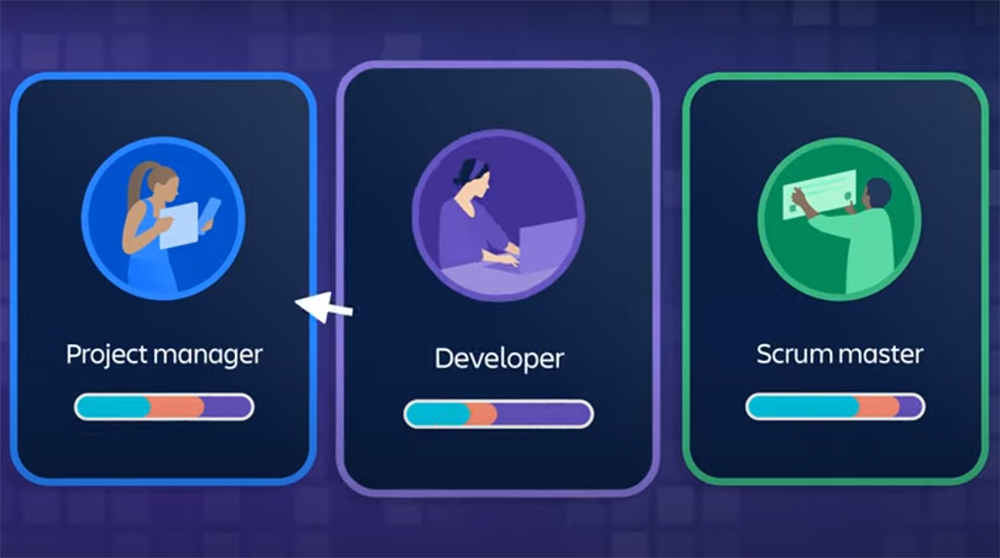
Key Features:
- Customizable workflows: Tailor Jira Core to fit your unique business processes;
- Issue tracking: Manage tasks, projects, and issues efficiently;
- Process automation: Automate repetitive tasks to enhance efficiency;
- Collaboration tools: Encourage team collaboration with real-time communication;
- Custom fields and forms: Capture specific information relevant to your business projects;
Jira Software:
Best For: Software development teams, especially those following agile methodologies like Scrum or Kanban, who require tools for agile project management, sprint planning, and issue tracking.
Key Features:
- Agile project management: Support agile practices with sprint planning, backlog management, and user story tracking;
- Issue tracking: Manage software-related issues, bugs, feature requests, and user stories;
- Custom workflows: Define and customize workflows to match agile practices;
- Integration with development tools: Seamlessly connect with version control systems and other development tools;
- Extensive reporting and dashboards: Analyze metrics and track team performance [7];
Jira Service Management:
Key Features:
- IT service management: Streamline service request and incident management;
- Self-service portal: Empower users to find answers and raise requests independently;
- Automation rules: Automate repetitive service tasks to reduce manual effort;
- Reporting and analytics: Gain insights into service performance and identify areas for improvement;
- Asset and change management: Track and manage IT assets and changes seamlessly;
Jira Ops:
Best For: Teams involved in incident management and resolving operational issues, such as site reliability engineers (SREs) and DevOps teams.
Key Features:
- Incident management: Respond to and resolve incidents swiftly with incident timelines and tracking;
- Collaboration tools: Coordinate and communicate during incidents with real-time collaboration;
- Post-incident analysis: Conduct thorough post-incident reviews and analysis;
- Automation: Implement automation to reduce the impact of incidents;
- Integration with other DevOps tools: Seamlessly connect with other tools in your DevOps toolchain;
FAQ:
-
What is Jira Core used for?
Jira Core is primarily used for project and task management, with a focus on business and administrative teams. It helps in organizing, tracking, and managing tasks, projects, and processes across various business functions such as HR, marketing, legal, and operations. Jira Core is ideal for streamlining non-technical projects and enabling teams to customize their workflows to suit specific business processes.
-
What are the core areas of Jira?
The core areas of Jira include issue tracking, project management, workflow automation, and collaboration. Jira allows users to create and manage issues, customize workflows, automate processes, and collaborate in real time, making it a versatile tool for various business functions.
-
What is the difference between Jira Core and Jira Service Desk?
Jira Core is focused on project management and task tracking for business and administrative teams. In contrast, the Jira Service Desk is tailored for IT service management and customer support, providing features like request handling, knowledge base, and self-service portals. While Jira Core can be customized for business processes, Jira Service Desk is designed specifically for service-oriented operations.
-
Is Jira Core the same as Jira Software?
No, Jira Core and Jira Software are not the same. Jira Core is designed for business project management and process tracking, while Jira Software is intended for software development project management, with features tailored for agile methodologies.
-
What are the different versions of Jira?
Jira has several product offerings, including Jira Software, Jira Service Desk, Jira Core, and Jira Ops. Each product is designed for specific use cases and industries.
-
How do you update Jira Core?
Updating Jira Core typically involves following Atlassian’s upgrade documentation. The specific steps may vary based on your current version and hosting platform (e.g., self-hosted or Atlassian Cloud). Detailed instructions for updating Jira Core are available in the official Atlassian documentation.
-
What is the difference between Jira releases and versions?
In Jira, a “version” typically refers to a release or a specific iteration of a project. However, a “release” may have a broader connotation and can include several versions. Releases often involve packaging multiple versions together for a major product release or milestone.
-
Is Jira Software the same as Jira Cloud?
No, Jira Software and Jira Cloud are not the same. Jira Software refers to the product designed for software development teams, while Jira Cloud is a hosting option provided by Atlassian that allows you to use various Jira products in the cloud.
-
Does Jira have versions?
Yes, Jira allows you to create and manage versions, which are used to track and organize the release of project deliverables or software updates. Versions help in planning and managing the progress of work items within a project.
-
What are the key features of Jira Core?
Key features of Jira Core include customizable workflows, issue tracking, process automation, real-time collaboration, custom fields, and forms, and the ability to manage tasks, projects, and business processes.
-
What is the difference between Jira Core and Confluence?
Jira Core is primarily for project and task management, while Confluence is a collaboration tool for creating, sharing, and organizing documentation and content. Confluence is often used for team collaboration, knowledge sharing, and creating internal documentation.
-
Does Jira Core have boards?
Jira Core does not have boards by default. Boards are a feature typically associated with Jira Software, which is designed for agile project management. However, you can create custom boards in Jira Core by configuring your projects and workflows to suit your needs.
-
What is the difference between Jira and Jira Agile?
Jira Agile was a plugin for Jira Software that focused on agile methodologies. However, since Jira Software includes agile features, the term “Jira Agile” is less commonly used. Jira Software is designed for agile project management, while Jira Core focuses on general project and task management.
-
What is Jira Software best for?
Jira Software is best for software development teams and projects that follow agile methodologies, such as Scrum or Kanban. It is specifically designed to support agile project management, sprint planning, and issue tracking.
-
Does Jira use Scrum?
Jira supports Scrum as one of the agile methodologies. It provides tools for managing Scrum projects, including sprint planning, backlog management, and burndown charts. However, Jira is versatile and can be adapted for various other project management methodologies.
-
How to install Jira Core?
The installation process for Jira Core depends on your specific requirements, such as self-hosted or cloud-based hosting. Detailed installation instructions can be found in the official Atlassian documentation, which provides step-by-step guidance.
-
What is the difference between the Jira dashboard and board?
A Jira dashboard is a customizable page that provides an overview of your projects and tasks. It displays gadgets and reports to help you monitor progress. A board, on the other hand, is typically associated with agile project management and displays the status of tasks and issues as they move through a workflow.
-
Is Confluence included in Jira Software?
Confluence is a separate product from Jira, and it is not included in Jira Software by default. However, you can integrate Jira and Confluence to link project-related information and documentation.
-
Can Jira replace ServiceNow?
Jira, particularly Jira Service Management, can serve as a service desk and IT service management tool similar to ServiceNow. Whether Jira can replace ServiceNow depends on the specific requirements and complexity of your organization’s service management needs.
-
Is Jira Software free?
Jira Software is not free. Atlassian offers a free trial period, but after that, it is a paid product. Pricing depends on the number of users and hosting options (self-hosted or Atlassian Cloud).
-
Who owns Jira Software?
Jira Software is developed and owned by Atlassian, an Australian software company known for its range of collaboration and productivity tools.
-
How many types of projects are there in Jira?
Useful Video: Jira Core – Introduction | Fundamentals and usage
References:
- https://community.atlassian.com/t5/Jira-Software-questions/Difference-between-Jira-Software-and-Jira-Core/qaq-p/1374077
- https://community.atlassian.com/t5/Jira-questions/Jira-Core-Vs-Jira-Software/qaq-p/820160
- https://www.clearvision-cm.com/blog/jira-software-or-jira-core-4-questions-to-help-you-decide/
- https://answers.seibert-media.com/t/jira-what-is-the-difference-between-jira-core-jira-software-and-jira-service-desk/585
- https://www.globallogic.com/uk/services/offerings/atlassian/jira-software-jira-core/
- https://actonic.de/en/jira-core-vs-jira-software-vs-jira-service-desk/
- https://www.k15t.com/blog/2018/12/which-jira-should-i-get





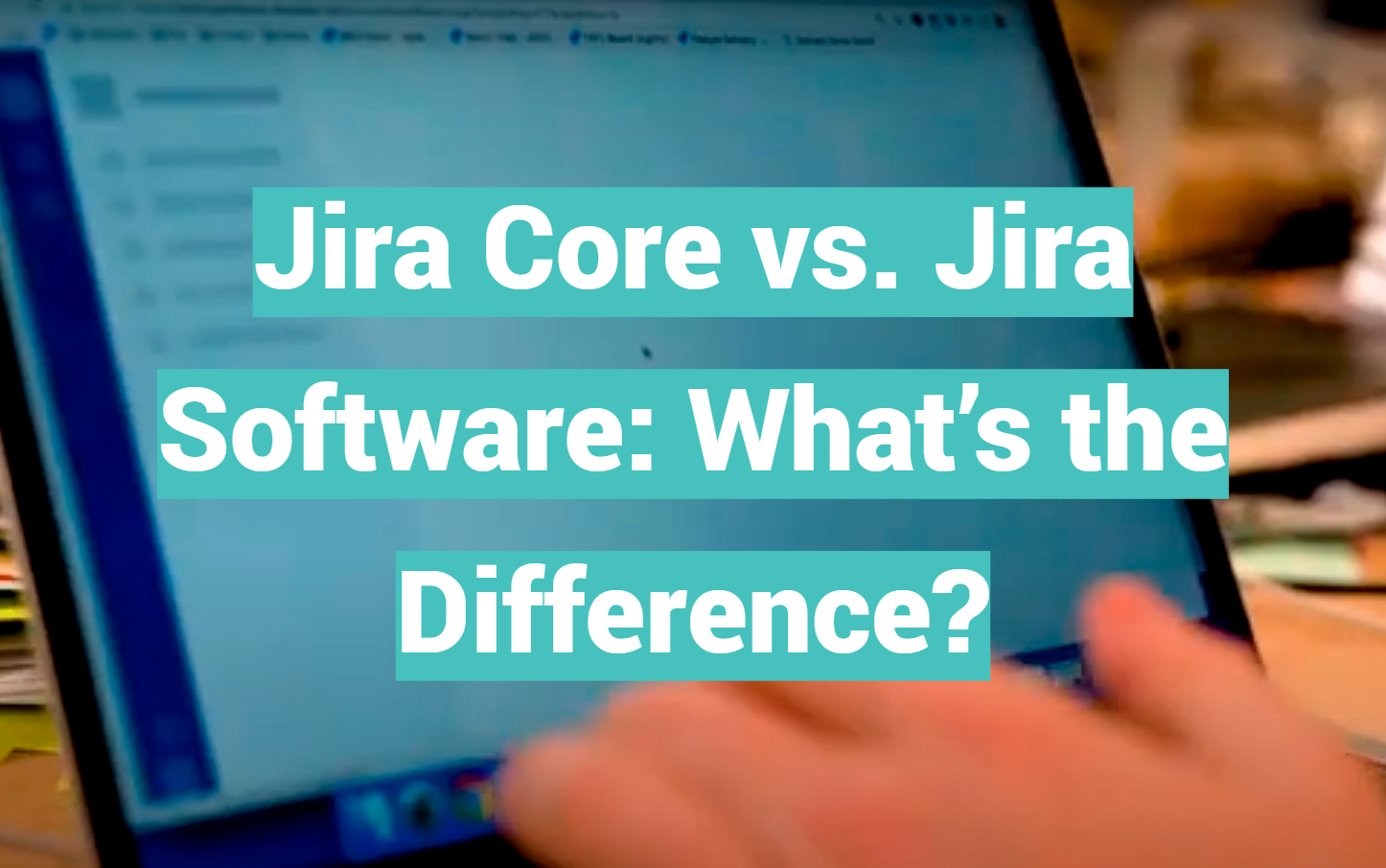


Leave a Review